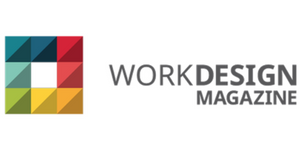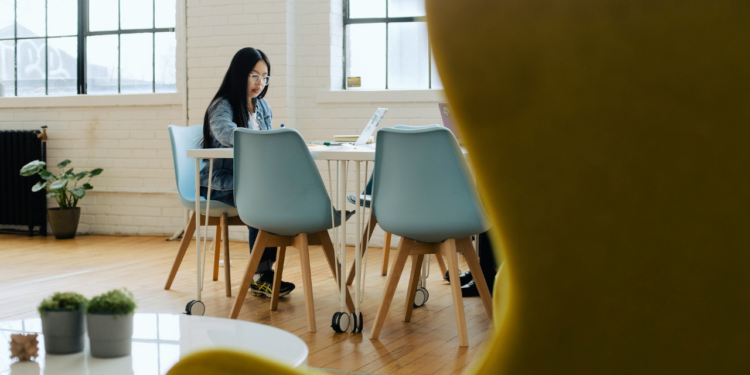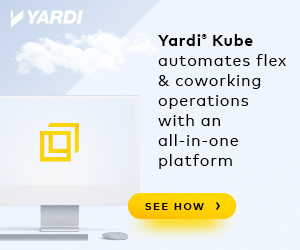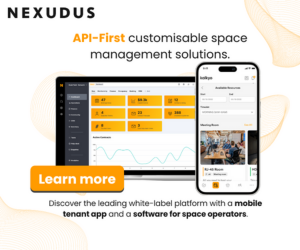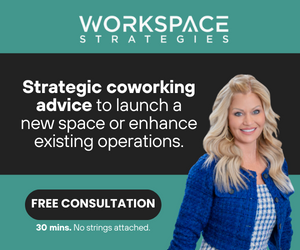- Despite nearly two decades of focus on workplace wellness, further enhanced by commendable progress, we need a more potent toolkit to entice teams back to the office — anchored in emotionally evocative design.
- Providing options for different types of spaces can mold an organization’s culture and boost productivity by instilling a sense of autonomy in employees, which, in turn, kindles positive emotions.
- In doing so, we forge workplace environments that stand as a testament to the transformative power of design on the human experience.
This article was written by Elina Cardet of Arcadis for Work Design Magazine.
The quest to forge emotional connections through architectural design has long captivated the minds of architects and designers. Today, in our post-COVID-19 world characterized by complex socio-economic shifts, this endeavor holds more significance than ever, particularly within workplace interiors.
The advent of the hybrid work model, while full of advantages, has simultaneously accentuated feelings of isolation, taking a toll on mental well-being. Despite nearly two decades of focus on workplace wellness, further enhanced by commendable progress, we need a more potent toolkit to entice teams back to the office — anchored in emotionally evocative design.
Let us reimagine the workplace as a vibrant and magnetic space filled with meaning where people gather, connect, learn, collaborate, and create. When comprehending the emotional resonance of designed offices and their profound impact on our creativity, focus, and well-being, we turn to the realm of neuroscience. Studies have unveiled the intricate influence of natural and built environments on our brains, emotional responses, behaviors, and overall health.
Aesthetic Experiences
Our brains are continuously processing visual, sensory, and spatial information. Neuroaesthetics research shows how our brains react to art, including architecture, and the response to beauty. Aesthetically pleasing environments trigger the release of dopamine, the neurotransmitter responsible for pleasure and reward, simultaneously reducing stress—a phenomenon that extends to beauty found in well-designed spaces. Moreover, aesthetically enriched offices evoke awe and pride in one’s workplace.
Aesthetic experiences engage our senses, emotions, and pre-existing knowledge, encompassing the sensory-motor, emotion-valuation, and meaning-knowledge neural systems, all orchestrated by the prefrontal cortex (for thinking) and limbic systems (for emotions).
In other words…we think and feel beauty.
The Aesthetic Triad
In 2013, Chatterjee and Shimamura introduced the concept of The Aesthetic Triad, which has more recently been applied to architectural interiors, focusing on three psychological components that are integral to the perception of aesthetics: coherence, fascination, and hominess. Emotion is central for all three, ranging from the pleasant to the unpleasant or from the attractive to the unattractive.
Coherence, the first factor, pertains to the ease of organizing and comprehending a space or scene. It encompasses the emotional response to the clarity of layout, geometry, and spatial organization, profoundly impacting how people interact and communicate. Open spaces with lofty ceilings foster big-picture thinking, spontaneous interactions, and idea-sharing, especially when prospect and refuge are present. Conversely, secluded offices with lower ceilings and views of adjacent open areas support focus and concentration, ideal for detail-oriented tasks.
Providing options for different types of spaces can mold an organization’s culture and boost productivity by instilling a sense of autonomy in employees, which, in turn, kindles positive emotions.
By designing distinctive, experiential, visually captivating spaces that encourage exploration and surprise, we can evoke fascination, defined by informational richness and generated interest. Beautiful, inviting, emotionally stimulating spaces engage multiple senses by using textures, fractals, organic geometries, natural materials, and warm color lighting. These elements can replace memories of bland office environments with new, positive emotions.
Crafting a relaxed, home-like ambiance through ergonomic furniture, precisely calibrated acoustics, and thermal comfort plays a role in eliciting the perception of hominess, which relates to personal ease and comfort within architectural interiors. Striking a balance between visual complexity and simplicity also draws forth this positive emotional response.
Our emotional design toolkit encompasses two more elements: Nature and Color Psychology. Exposure to natural elements like plants, natural light, and views of greenery reduces stress, enhances creativity, boosts cognitive functions, and improves overall well-being. The strategic use of color can profoundly affect mood and emotions. Warm colors like orange and yellow infuse energy, optimism, and enthusiasm, while cooler tones like blue and green foster creativity, calmness, and focus.
As we continue exploring the nexus of neuroscience, architecture, design, and aesthetic perception, we can harness these insights to create spaces that serve their functional purpose and nurture the emotional, aesthetic, social, and psychological needs of its occupants. In an age marked by generative artificial intelligence, leveraging these scientific insights may guide us in cultivating our humanistic traits and skills. In doing so, we forge workplace environments that stand as a testament to the transformative power of design on the human experience.

 Dr. Gleb Tsipursky – The Office Whisperer
Dr. Gleb Tsipursky – The Office Whisperer Cat Johnson – Coworking Marketing Maven
Cat Johnson – Coworking Marketing Maven Angela Howard – Culture Expert
Angela Howard – Culture Expert Drew Jones – Design & Innovation
Drew Jones – Design & Innovation Andrea Pirrotti-Dranchak – Competitive Advantage
Andrea Pirrotti-Dranchak – Competitive Advantage Jonathan Price – CRE & Flex Expert
Jonathan Price – CRE & Flex Expert Jeremy Fennema – Tech Innovation Alchemist
Jeremy Fennema – Tech Innovation Alchemist
